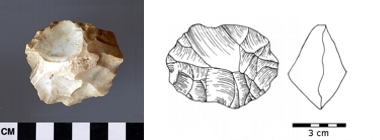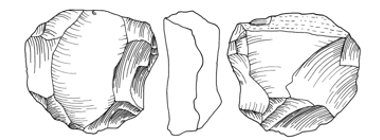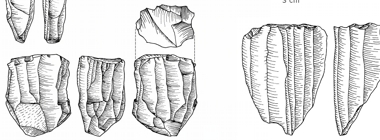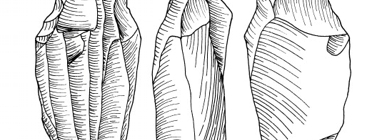Varieties of Cores
While some cores were abandoned after minimal preparation and removal of only a few flakes, others were systematically and intensively exploited. That was the case both in the Middle Palaeolithic and in later periods, as is shown by a variety of Levallois, discoid and prismatic cores (Figures 16, 17, 18 and 19).
Was silex removed from the quarry in the form of cores, partly or fully prepared? Or was it removed in the form of ready-to-use flakes derived form such cores? We cannot exclude the first alternative, and, in fact, for later prehistory (Neolithic and Early Bronze Age) we have hard evidence in its support (see section Our work in Petrota). However, preliminary statistics show that the scatter contains far too many systematically worked cores in comparison with usable flakes derivable from those cores. This suggests that a considerable volume of raw material left the quarry in the form of blanks rather than cores. At least this seems to be the case with prismatic blade cores and, perhaps, with discoid cores.



